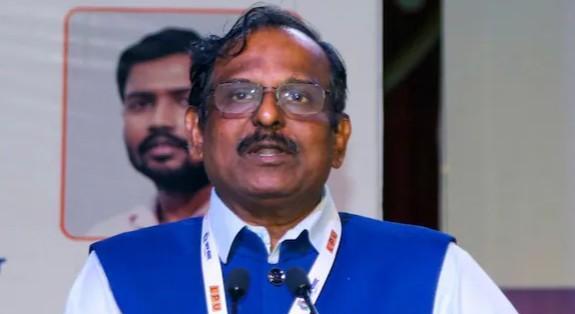
10 Satellites Working to Ensure Citizens’ Safety: ISRO
In an era of heightened tensions between India and Pakistan, the Indian Space Research Organisation (ISRO) is leaving no stone unturned to ensure the safety and security of Indian citizens. According to ISRO Chairman V Narayanan, 10 satellites are continuously working around the clock to monitor and protect India’s borders. In an interview, Narayanan highlighted the importance of satellite and drone technology in ensuring the security of the country.
“We have to monitor our 7,000 km seashore areas. Without satellite and drone technology, we can’t achieve many things,” Narayanan said. His statement underscores the crucial role that ISRO plays in maintaining India’s national security.
ISRO’s satellite-based surveillance system is designed to monitor the country’s borders, detect any potential threats, and respond accordingly. The organisation has a network of satellites that provide real-time data and imagery to help track and identify suspicious activities.
One of the key challenges that ISRO faces is monitoring India’s vast coastline. With a length of over 7,000 km, India’s seashore is vulnerable to various threats, including terrorism, piracy, and smuggling. To address this challenge, ISRO is using a combination of satellite and drone technology to monitor the coastline.
ISRO’s satellites are equipped with advanced sensors and cameras that can detect and track any suspicious activities on the coastline. The organisation is also using drones to gather intelligence and conduct surveillance missions. Drones are particularly useful in hard-to-reach areas, such as remote islands and coastal cliffs, where it is difficult to deploy human surveillance teams.
ISRO’s satellite-based surveillance system is not limited to monitoring the coastline. The organisation is also using its satellites to monitor India’s borders with Pakistan and China. ISRO’s satellites are equipped with advanced sensors that can detect and track any movement or activity along the borders.
In addition to its surveillance capabilities, ISRO is also working on developing advanced communication systems that can provide real-time communication between different branches of the Indian military. ISRO’s communication systems are designed to ensure seamless communication between different units and agencies, enabling a swift and effective response to any security threat.
ISRO is scheduled to launch another surveillance satellite on May 18, which will further enhance the country’s surveillance capabilities. The new satellite will be equipped with advanced sensors and cameras that will enable ISRO to gather more detailed and accurate intelligence on any potential threats.
India’s space programme has come a long way since its inception in the 1960s. ISRO has successfully launched several satellites, including the Chandrayaan-1 moon mission and the Mangalyaan Mars orbiter. The organisation’s success in launching these missions has demonstrated India’s capability to develop advanced space technology.
In conclusion, ISRO’s 10 satellites are working around the clock to ensure the safety and security of Indian citizens. The organisation’s satellite-based surveillance system is designed to monitor India’s borders, detect any potential threats, and respond accordingly. ISRO’s commitment to national security is evident in its continued investments in advanced space technology and its efforts to develop new and innovative surveillance systems.






